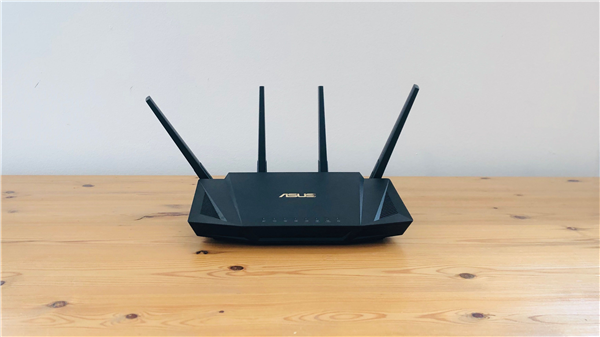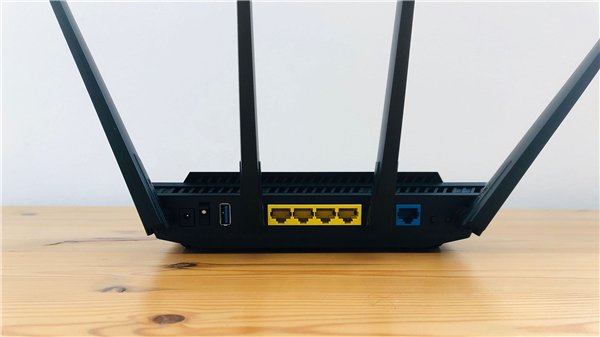
In the digital age, home networks are as essential as water and electricity in our homes. We rely on them for work, study, entertainment, and socializing. However, with the widespread use of the internet, the security threats facing home networks are increasing, and routers, as the core hub of home networks, have become prime targets for hackers.
If a router is compromised, hackers may steal personal privacy, alter network settings, or even control smart devices connected to the network, leading to various inconveniences and risks in daily life. Therefore, enhancing home network security and protecting routers from attacks is crucial. Below are several easy-to-implement and effective methods to help build a strong security barrier for home networks.
Select a Secure and Reliable Router
When purchasing a home router, the choice of brand is particularly important. Well-known brands typically invest more resources in research and development and security protection, providing more stable performance and stronger security features.
In addition to the brand, supporting the latest security protocols is also an important consideration when selecting a router. The WPA3 encryption protocol offers a higher level of encryption algorithms compared to previous versions, effectively preventing hackers from obtaining network passwords through brute force attacks, significantly enhancing wireless network security.
Some high-end routers are also equipped with additional security features such as built-in firewalls and Intrusion Detection Systems (IDS). These features provide an extra layer of protection for home networks. If conditions permit, prioritizing routers with such features can significantly improve overall network security.
Timely Update Router Firmware
The router firmware is the core software that runs the device, similar to an operating system on a computer, and needs to be updated regularly to fix known security vulnerabilities and improve performance. Regularly checking and updating router firmware is an important measure to ensure network security.

The method for updating firmware varies slightly among different brands and models of routers, but it can generally be done through the router’s management interface. Most routers support an automatic update feature; when enabled, the router will automatically download and install available updates, ensuring it always runs the latest version of the firmware, greatly reducing the risk of being exploited by hackers using known vulnerabilities.
Change Default Login Credentials
Many home routers come with default usernames and passwords set at the factory, such as the common username “admin” and passwords like “admin” or “123456”. These default credentials can be easily obtained by hackers, becoming a breakthrough point for them to invade home networks. According to relevant security agencies, a significant portion of attacked home routers were compromised because users did not change the default login information.
To enhance router security, it is essential to change the default management username and password immediately upon initial setup or at any time thereafter. When setting a new password, be sure to follow strong password principles, with a length of at least 8 characters, preferably including uppercase and lowercase letters, numbers, and special characters, such as “Abc@123456”.

Enable Strong Network Encryption
Wireless network encryption is a key measure to protect home networks from unauthorized access. Currently, WPA2 (Wi-Fi Protected Access II) and the more advanced WPA3 are commonly used encryption protocols.
WPA2 has significantly improved security compared to earlier encryption protocols, but as technology evolves, it also faces some security challenges. WPA3 employs more advanced encryption algorithms, providing stronger security protection and effectively preventing hackers from stealing network data through brute force attacks and man-in-the-middle attacks.
In the router settings, ensure that WPA2 or WPA3 encryption is selected and set a complex and unique wireless network password. It is recommended that the password length be over 12 characters, including letters, numbers, and special characters, avoiding easily guessable information such as birthdays or phone numbers. For example, a password like “#HomeNet2025!Abc” is relatively secure.
Limit Connected Devices
Limiting the number and type of devices that can connect to a home router can effectively reduce the risk of network attacks. On one hand, device access restrictions can be implemented through MAC address filtering.
Each network device has a unique MAC address, similar to an identification number for the device. In the router management interface, you can enable the MAC address filtering feature, adding the MAC addresses of devices allowed to access the network to a whitelist. Only devices on the list can connect to the router, while others will be denied access.
On the other hand, regularly monitor the list of connected devices. Most router management interfaces provide the ability to view currently connected devices. By checking device names, IP addresses, and MAC addresses, you can confirm whether there are any unfamiliar devices connected. If unknown devices are found, disconnect them immediately, change the wireless network password, and carefully check whether the router settings have been tampered with.
Enable Firewall
Most modern home routers come with built-in firewall functionality, which acts like a security guard for the home network, monitoring network traffic and identifying and blocking suspicious network connections and malicious attacks. Once the firewall is enabled, it will inspect incoming and outgoing data packets based on preset rules, allowing only packets that meet the criteria to pass through, effectively preventing external hackers from intruding and internal malware from sending data out.
In the router management interface, find the firewall settings option and ensure that the firewall function is enabled. Generally, the default firewall settings of the router can meet basic security needs, but users can also make appropriate adjustments based on actual usage.
Monitor Network Activity
Monitoring home network activity can help detect anomalies in a timely manner and provide a clearer understanding of network usage, thereby optimizing network performance.
Many routers offer network activity log features that record detailed data such as information about devices connected to the network, access times, visited websites, and IP addresses. Regularly reviewing these logs can help identify any abnormal network connection behaviors, such as a device frequently attempting to connect to unknown external IP addresses in a short period or unfamiliar devices accessing the network during times when no family members are using it.
In addition to checking logs, some network monitoring tools can be used to monitor network traffic in real-time. Some routers come with simple traffic monitoring features that allow you to visually see the current upload and download speeds of each device, as well as traffic usage over a period of time.
Enhance Family Members’ Network Security Awareness
The security of a home network does not solely rely on technical protective measures; the network security awareness of family members is equally important. In homes, especially those with children or members who have limited knowledge of network security, it is necessary to strengthen education on network security knowledge.
At the same time, inform family members not to download and install software and applications from unknown sources casually. Some malware disguises itself as normal software, and once installed on a device, it may steal data from the device, control the device, or launch attacks on the home network through the device.

Conclusion:
Protecting home network security and preventing router attacks is a “protracted battle” that requires continuous attention and investment. By selecting secure and reliable routers, timely updating firmware, changing default login credentials, enabling strong network encryption, limiting connected devices, enabling firewalls, monitoring network activity, and enhancing family members’ network security awareness, you can significantly enhance the security of home networks. While enjoying the convenience brought by the internet, ensure that personal privacy and data security are not compromised, making the home network a truly safe and reliable digital space.
Source | Pacific Technology
Recommended Reading——TP-Link may face a $100 million fine in the US, and the risk of a sales ban remains!The US targets Chinese router companies under the guise of “national security”; China rebuts: No baseless accusations and presumption of guilt.This technology is expected to replace WiFi.What new requirements are there for testing WiFi 7? ☞ Business Cooperation: ☏ Please call 010-82306118 / ✐ Or send an email to [email protected]
☞ Business Cooperation: ☏ Please call 010-82306118 / ✐ Or send an email to [email protected]
